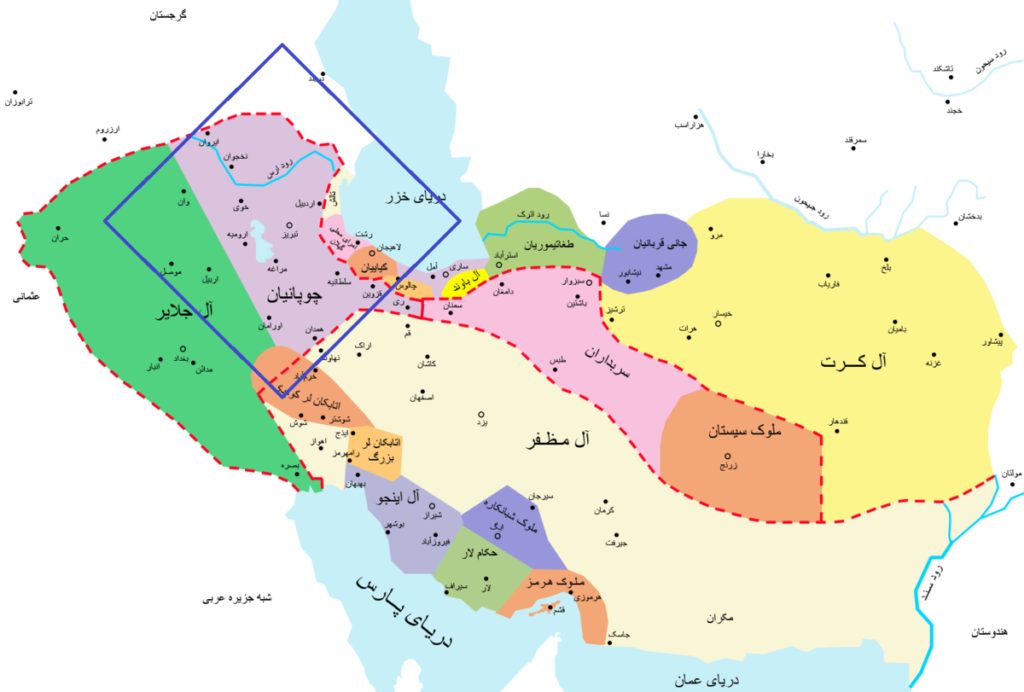After the collapse of the Arab Caliphate, various Islamic dynasties ruled the territories of the South Caucasus and Azerbaijan. As a rule, they were originally of Arabian origin, but were gradually Turkicized and Iranianized. The Seljuk conquests did not change the balance of power much, except that now local princes began to pay tribute to the new dynasty. However, even their power was not eternal. And in the 13th century Western Asia was conquered by the Mongols.

The historical region of Azerbaijan became one of their main strongholds. Unlike other natural and climatic zones of the region, it was perfectly moisturized and rich in grass. Besides, the Great Caucasus Passage — one of the two places where one could cross the Caucasus Mountains, but the most convenient one — was located here. Therefore, attacks of the hostile Golden Horde were to be expected here and from here the counter marches to the north started.
It is not surprising that in the Azerbaijani steppes were the stakes of Mongol khans, who spent their lives in nomadism and refused to settle down on the land. It was the unofficial capital of Asia, which lost this status only in the 17th century when Abbas the Great, the Shah of Iran from the Turkic Safavid dynasty, moved his residence from Tabriz to Isfahan.
In the 13th and 14th centuries, however, Azerbaijan was considered the main stronghold and source of Mongol power. While the armies of the Hulaguid state relied on the military strength of the Oghuz Turkic tribes.
And what became of the Azerbaijani land after the Mongol dynasty was terminated?

Mausoleum of Oljeitu
Oljeitu, the last great ruler of the Hulaguids, who sat on the throne in 1304-1316s, created the basis for future turmoil in his power. He abolished traditional Mongolian religious toleration and began changing his kingship as he moved from one religion to another. He was baptized into a Nestorian version of Christianity after his birth, converted to Buddhism in adulthood, then became a Sunni, and eventually converted to the Shiite faith. Each time after the change of confession, the state was reshuffled accordingly.
It was under him that the Emir Choban, the protagonist of our narrative, became a notable administrator and commander. The founder of his family was a man named Sorgan-Shira, a simple laborer who served the chief of the Taijiuts. He and his sons helped Genghis Khan escape from Taijiut captivity, and then made a career at the court of the Mongol Empire. The winding steppe roads led their family to Azerbaijan.
Choban had influence at the court of three successive Mongol khans. But he was envied by other nobles who maligned the famous general to Abu Said Khan. The latter sent him into exile in 1327 — the commander fled to Herat, where he was sent to heaven by local Tajik princes. But his family retained its influence at court, and one of his daughters even married the Khan.

In a blue square
When the last Mongol sovereign passed away, his viceroys and warlords began a struggle to divide the state. During this difficult time, the Chobanids managed to establish themselves in Azerbaijan, and the city of Tabriz became the capital of their possessions. Nominally, it was the recent center of the Hulaguid power, and therefore they were considered the main ones in the post-Mongol Middle Eastern world. To all this, Choban’s sons and grandsons kept puppet Genghisid khans under them.
But their attempts to expand their subject territories in the 1340s-1350s failed. A campaign aimed at taking Baghdad from the other Mongol rulers, the Jalairids, was repulsed with considerable losses. From another neighboring principality it was not possible to take away the region of Fars, the historical capital of Iran, from which the entire Persian nation got its name.
Al-Malik al-Ashraf gave himself the title of Sultan of Azerbaijan in 1353. But he was inept and harsh to his subjects. A few years later he failed to gather an army to fight back the army of Golden Horde Janibek Khan. He fled, but was handed over to the Tatars by his own people. And when the enemies sent the last of the Chobanids to heaven, there were no people in his country who would cry for him.

The remaining representatives at different times lost their lives in the struggle with their numerous enemies. After several decades of internecine wars, the territory of Azerbaijan was divided by the state of Shirvanshahs and the young Turkic power of Kara Koyunlu, which took possession of Tabriz. The wheels of history turned faster again.
